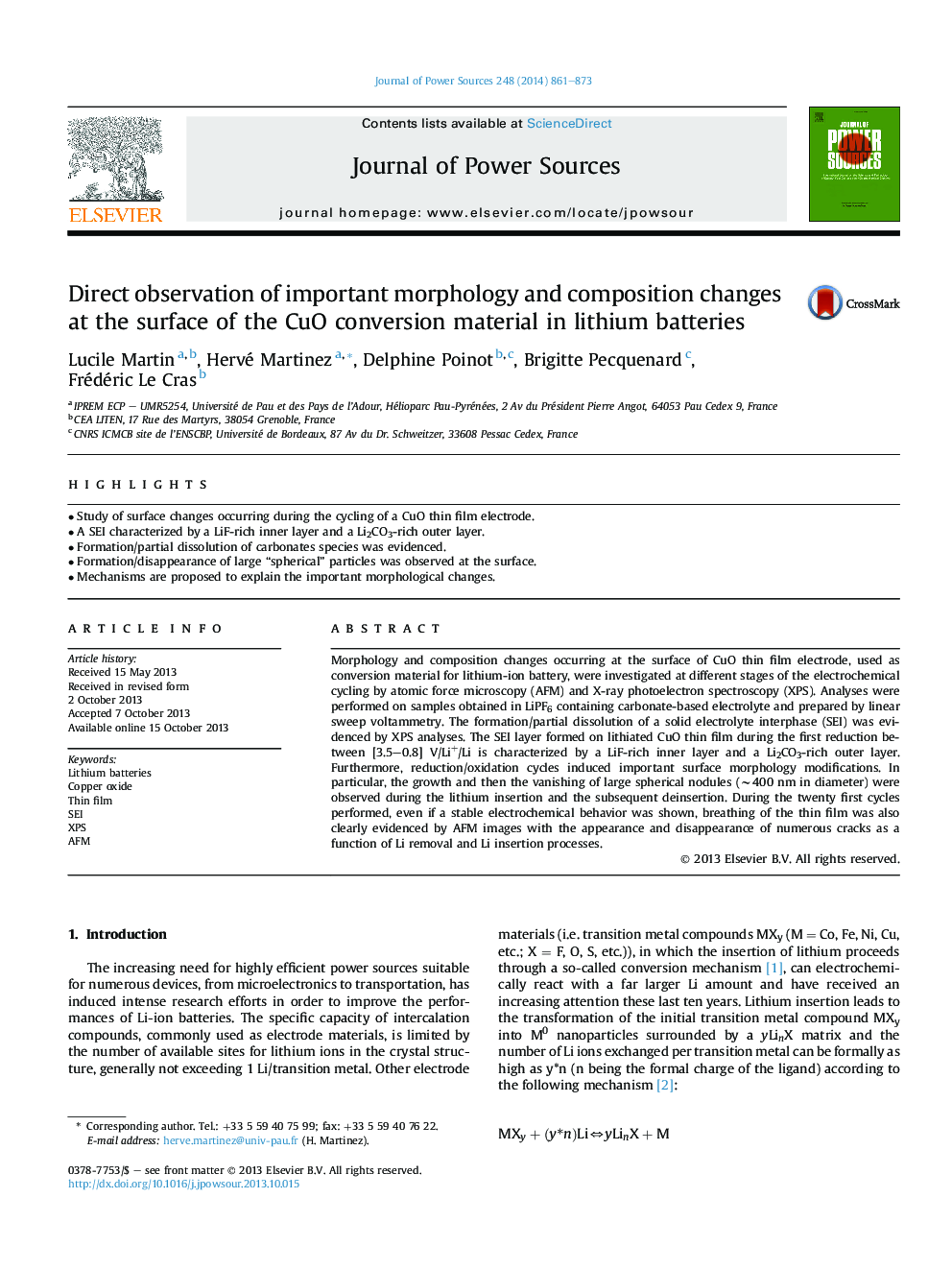| Article ID | Journal | Published Year | Pages | File Type |
|---|---|---|---|---|
| 7739093 | Journal of Power Sources | 2014 | 13 Pages |
Abstract
Morphology and composition changes occurring at the surface of CuO thin film electrode, used as conversion material for lithium-ion battery, were investigated at different stages of the electrochemical cycling by atomic force microscopy (AFM) and X-ray photoelectron spectroscopy (XPS). Analyses were performed on samples obtained in LiPF6 containing carbonate-based electrolyte and prepared by linear sweep voltammetry. The formation/partial dissolution of a solid electrolyte interphase (SEI) was evidenced by XPS analyses. The SEI layer formed on lithiated CuO thin film during the first reduction between [3.5-0.8]Â V/Li+/Li is characterized by a LiF-rich inner layer and a Li2CO3-rich outer layer. Furthermore, reduction/oxidation cycles induced important surface morphology modifications. In particular, the growth and then the vanishing of large spherical nodules (â¼400Â nm in diameter) were observed during the lithium insertion and the subsequent deinsertion. During the twenty first cycles performed, even if a stable electrochemical behavior was shown, breathing of the thin film was also clearly evidenced by AFM images with the appearance and disappearance of numerous cracks as a function of Li removal and Li insertion processes.
Related Topics
Physical Sciences and Engineering
Chemistry
Electrochemistry
Authors
Lucile Martin, Hervé Martinez, Delphine Poinot, Brigitte Pecquenard, Frédéric Le Cras,
